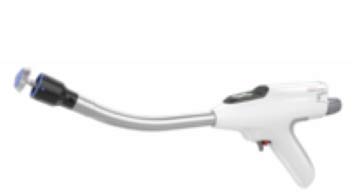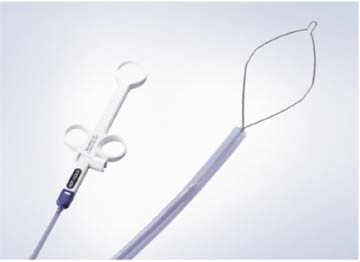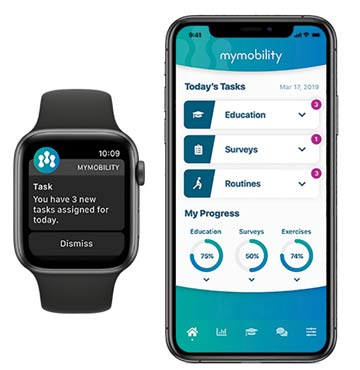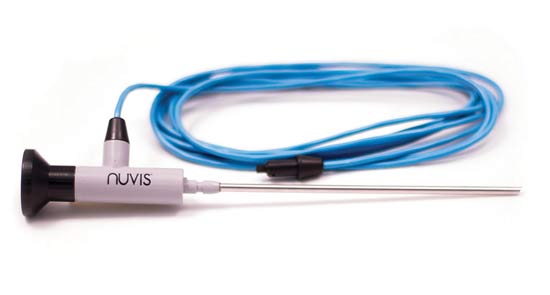
Spinal Implants Mimic Real Bone
The Conduit Interbody Platform from DePuy Synthes is made of bone-mimicking cellular titanium that closely matches the porosity of human bone to facilitate post-op fusion. Proprietary 3D printing creates a modulus of elasticity (the measure of a material's stiffness) of titanium that's similar to the spongy bone of vertebrae. The porosity design allows for excellent imaging visualization of the space in and around the implant during and after surgery. Implants come in various shapes and sizes designed specifically for cervical, curbed TLIF, straight TLIF, lateral and ALIF procedures.

A Better Way to Staple
Echelon’s Circular Powered Stapler is designed to create anastomoses during colorectal surgery. The stapler’s 3D stapling and gripping surface technology reduces and evenly distributes compression force on tissue to optimize perfusion and reduce leaks at the staple line, which creates a more secure anastomosis. Push-button activation results in a predictable firing time and reduces movement at the distal tip for added stability, says the company. Available in 4 sizes — 23mm, 25mm, 29mm and 31mm — for proper matching to the size of the lumen.

2-in-1 Polyp Snare
Olympus’s SnareMaster is a hybrid hot and cold snare, so you don’t have to switch out instruments while performing hot and cold polypectomies, a factor that improves clinical efficiencies. Cold snaring could lead to fewer post-polypectomy complications, says the company. The hexagonal device allows for precise manipulation and firm control when capturing colon polyps, features a 0.3mm thin wire for clean, sharp cutting, and retains loop stability and shape after multiple cuts. Available in 10mm and 15mm sizes.

App Promotes Personalized Care Pathways
Use Zimmer Biomet’s mymobility app to connect with orthopedic patients during the entire episode of care by sending procedure-specific information, care reminders and personalized messages directly to their iPhones or Apple Watches. Patients can exchange encrypted messages to members of the care team and learn how to take ownership in their care in order to limit complication risks. The app sends patient-reported feedback to surgeons, who can use the information to develop individualized care plans and guide patients toward optimized outcomes. Rehab and recovery data are also tracked on the patient’s phone or watch, letting surgeons monitor the progress and effectiveness of recovery protocols.

Prevent Duodenoscope Contamination
Last month, the FDA cleared GI Scientific's ScopeSeal for use on Olympus's TJF-Q180V duodenoscopes during endoscopic retrograde cholangiopancreatography (ECRP) procedures. The disposable device is specifically designed to seal off the elevator mechanism, the notoriously difficult-to-clean recessed area, and protect patients from possible cross-contamination. The device snaps onto the distal end of duodenoscopes to prevent bioburden from settling in the distal end of the scope and to allow instruments to be passed through a scope's working channel without coming in contact with the elevator area.

Battery-powered Disposable Arthroscope
Nuvis is a single-use, high-definition arthroscope that eliminates reprocessing concerns and repair costs associated with standard reusable scopes. Each scope comes sterile packaged, eliminating cross-contamination risks. A multi-lens optic system based on designs found in smartphone cameras provides clearer HD images, says the company. The battery-powered LED light incorporated into the scope’s distal tip eliminates the need to manage the clutter of fiberoptic light cords and cables on the sterile field.
.svg?sfvrsn=be606e78_3)
.svg?sfvrsn=56b2f850_5)